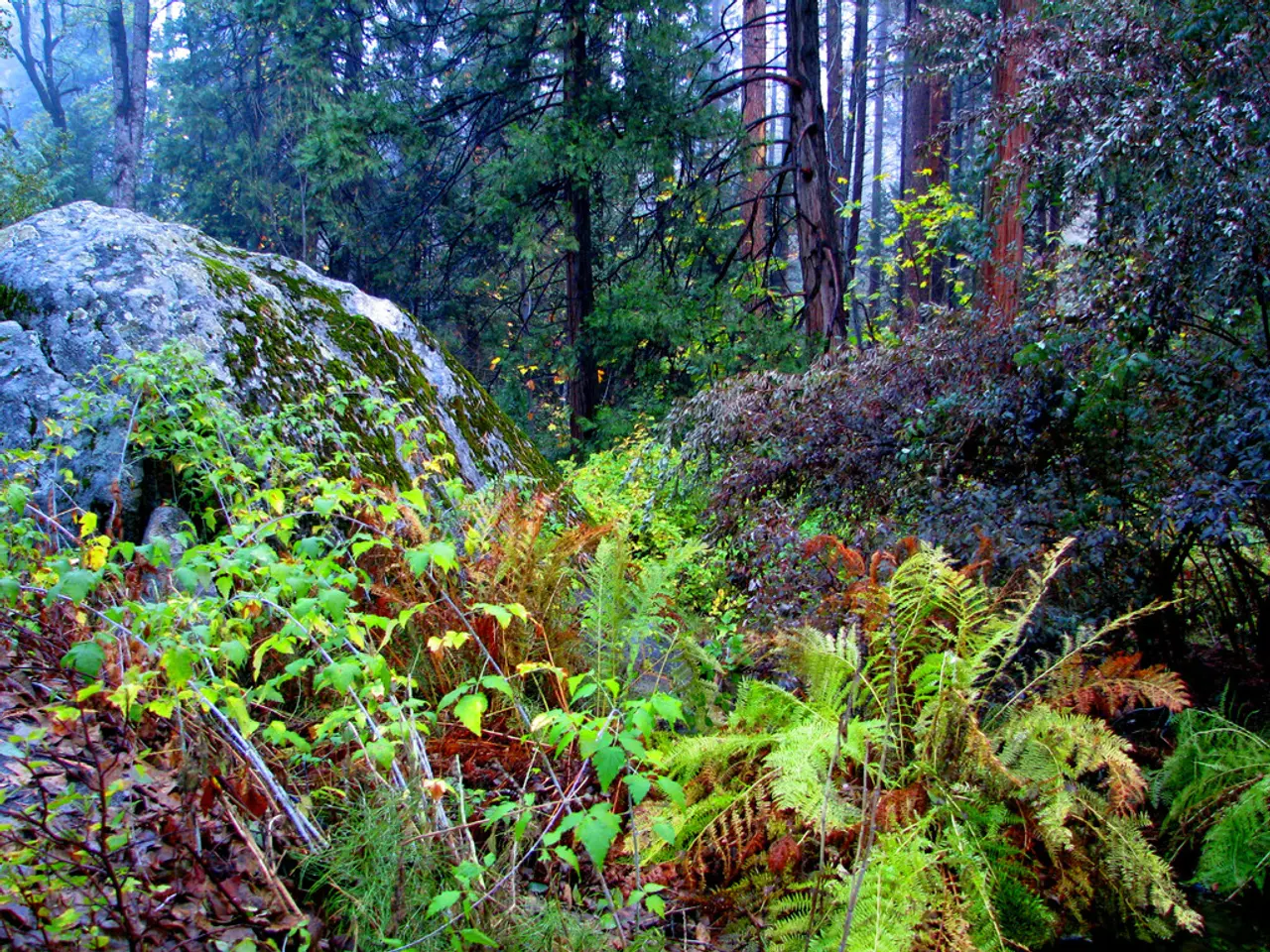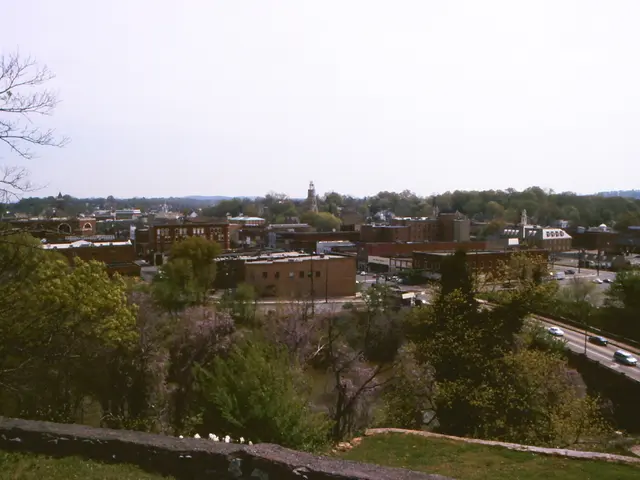Discovering Geological Marvels: Exploring the Stunning Geological Features Hidden within National Parks
The United States is home to an impressive network of 63 national parks, making them an ideal destination for budget-conscious travelers seeking adventure and breathtaking landscapes. These parks offer a diverse range of activities, from hiking and kayaking to wildlife viewing and scenic drives, catering to a wide array of interests.
One of the most distinctive parks is Wind Cave in South Dakota, known for its intricate pattern of paper-thin calcite veins on the cavern's roof, as well as unusual formations such as helictite shrubs and cave popcorn. Meanwhile, Pinnacles National Park in California boasts unique rock formations that were originally located around 200 miles south of Lancaster but have since moved four miles east due to movement along the San Andreas Fault.
These national parks contribute significantly to the global struggle for a healthy ecology and the protection of endangered species. In fact, Kilauea in Hawai'i Volcanoes National Park has been continually erupting since 1983, while fossils such as stromatolites, relics of the first life on Earth, have been discovered in some parks.
Entry fees are the primary source of income for these parks, with over 100 charging fees that vary based on the park and type of visit. For instance, Yellowstone charges $20 per person or $35 per vehicle, while Great Smoky Mountains National Park requires a $5 parking fee per day. Approximately 80% of the fee revenue collected at each park is reinvested directly back into that park for maintenance, visitor facilities, and infrastructure improvements.
Besides fees, the National Park Service (NPS) operates with a federal budget of about $3.1 billion annually. Additional significant funding comes from laws like the Great American Outdoors Act, which allocates up to $6.65 billion over five years to repair and upgrade park infrastructure such as roads, buildings, and water systems.
There are discussions and proposals to raise fees, especially for international tourists, to generate more funding. This approach mirrors practices in other countries where foreign visitors are charged higher rates, potentially increasing millions in revenue for underfunded parks.
Visitors can enjoy a broad spectrum of activities, from hiking and camping to educational programs, supported by ongoing investments in park facilities and services. Special events and passes, such as the America the Beautiful Pass series, facilitate exploration of diverse landscapes and experiences.
It's essential to note that the direction and strength of lava flows at Kilauea are unpredictable and cannot be forecast. Entrance to national parks is usually free on some holidays and other special events. For specific information about entrance fees and free admission days at Hawai'i Volcanoes National Park, Wind Cave, or Pinnacles National Park, it's recommended to visit the NPS website or contact the parks directly.
The most recent East Coast national park, River Gorge, is located in West Virginia, while Grand Canyon National Park can be accessed for $35 for a 7-day motor permit or for about $20 on foot. The formation of Pinnacles National Park occurred due to the same process that caused the 1906 San Francisco earthquake, and its placement is due to the San Andreas Fault, which caused a shift over 23 million years ago.
In summary, U.S. national parks finance themselves through a combination of entry fees reinvested locally, federal funding, and legislation-backed restoration funds. These parks attract tourists from all over the world with their stunning landscapes and natural wonders, offering a wide array of activities and educational opportunities for visitors to enjoy.
- The camper plans a budget-friendly trip, choosing national parks as their destination, seeking adventure and breathtaking landscapes.
- Wind Cave in South Dakota, known for its unique calcite veins and formations, is one of the distinctive parks.
- Pinnacles National Park in California boasts rock formations that moved due to the San Andreas Fault.
- These parks contribute to global ecology protection and harbor endangered species.
- Kilauea in Hawaii Volcanoes National Park has been continuously erupting since 1983.
- Fossils like stromatolites, relics of the first life on Earth, have been discovered in some parks.
- Entry fees are the primary source of income, with varying charges per park and type of visit.
- Approximately 80% of fee revenue is reinvested into each park for maintenance, facilities, and infrastructure improvements.
- The National Park Service operates with an annual federal budget of about $3.1 billion, and additional funds come from legislation like the Great American Outdoors Act.
- Discussions about raising fees, especially for international tourists, are underway to generate more funds.
- Visitors can enjoy hiking, camping, educational programs, and special events like the America the Beautiful Pass series.
- The lava flows at Kilauea are unpredictable and cannot be forecast.
- National parks offer free entrance on some holidays and special events.
- Information about entrance fees and free admission days can be found on the NPS website or by contacting the parks directly.
- The most recent East Coast national park, River Gorge, is located in West Virginia.
- Grand Canyon National Park can be accessed for $35 for a 7-day motor permit or about $20 on foot.
- The formation of Pinnacles National Park occurred due to the same process that caused the 1906 San Francisco earthquake.
- These parks attract tourists worldwide with their stunning landscapes, natural wonders, and diverse activities and educational opportunities.





